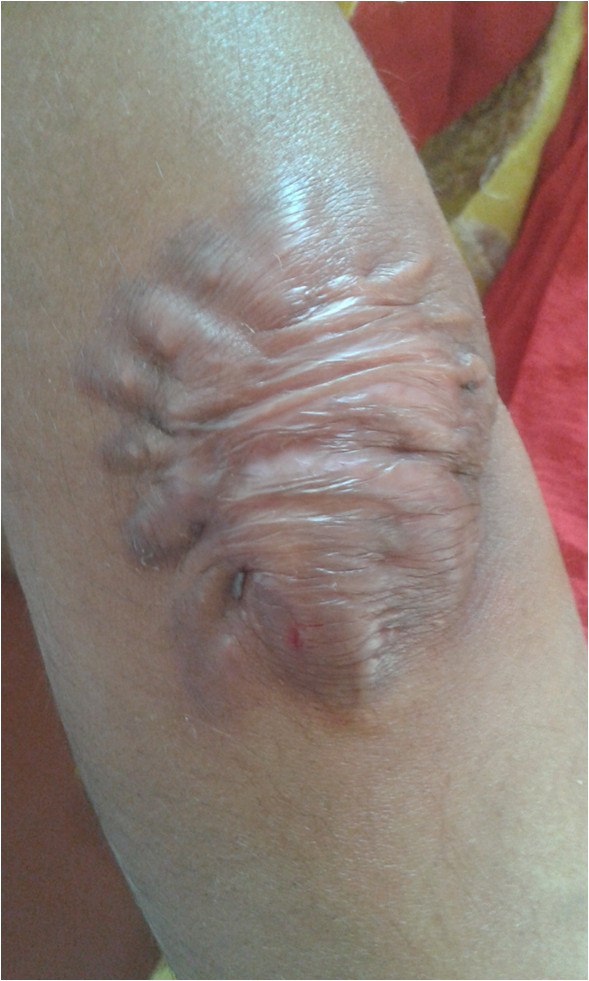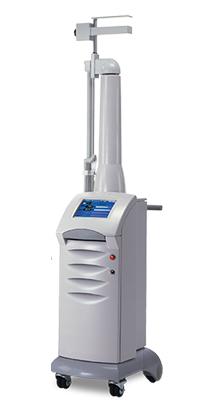Keloids
 Keloids are "scars that don't know when to stop". A keloid is a tough heaped-up scar that rises quite abruptly above the rest of the skin. It usually has a smooth top and a pink or purple color. Keloids are irregularly shaped and tend to enlarge progressively and do not subside over time.
Keloids are "scars that don't know when to stop". A keloid is a tough heaped-up scar that rises quite abruptly above the rest of the skin. It usually has a smooth top and a pink or purple color. Keloids are irregularly shaped and tend to enlarge progressively and do not subside over time.
- Some keloids become quite large and unsightly. Apart from causing cosmetic problems, these tend to be itchy, tender & painful to touch.
- Why keloids form in some people or body areas, is not understood well.
- Keloids are equally common in women and men. Keloids are less common in children and the elderly.
- People with darker skin are more likely to develop them.
- Keloids develop most often on the chest, back, shoulders, and earlobes.
After skin is injured, the healing process usually leaves a flat scar. Sometimes the scar is hypertrophic, or thickened, but confined to the margin of the wound. Hypertrophic scars tend to be redder and may subside by themselves, a process which can take one year or more.
Keloids, by contrast, may extend beyond the wound site. This tendency to migrate into surrounding areas that weren't injured originally distinguishes keloids from hypertrophic scars. Keloids typically appear following surgery or injury. Keloids can also develop following minor injuries like body piercing.
 The treatment outcomes vary from patient to patient and also with the modality used. Generally a combination of different options is used for optimal results. The methods available to treat keloids are:
The treatment outcomes vary from patient to patient and also with the modality used. Generally a combination of different options is used for optimal results. The methods available to treat keloids are:
- Cortisone injections: These are safe and not very painful. Injections are usually given once per month. Injections are safe and usually help flatten keloids; however, steroid injections can also make the flattened keloid redder by stimulating the formation of superficial blood vessels.
- 5-Fluorouracil: Injections of this chemotherapy agent, alone or together with steroids, have been used for treatment of keloids.
- Interferon: Injections of interferon have shown promise in reducing the size of keloids, though it's not yet certain whether the effect will be lasting.
- Laser: Ablative CO2 laser can be effective at flattening keloids and making them look less red. Treatment is safe and not very painful, but several treatment sessions may be needed.
- Surgery: This is risky, because cutting a keloid can trigger the formation of a similar or even larger keloid. Some dermatologists inject steroids or apply pressure dressings to the wound site after cutting away the keloid.
- Chemical peels (single or combination peels) and laser surgery (Q-switched NG-YAG Laser) may help in treatment of melasma. Generally, they are used in combination with bleaching creams and other topical applications depending on your skin type. Melasma should be treated under the supervision of an experienced dermatologist because complications can occur.
- It is important to follow the directions of our dermatologist carefully to get best results and to avoid side effects.
Skin Clinic
Working Time
- Mon-Sat
9.30 AM - 1.30 PM
5.30 PM - 8.00 PM
Saturday
9.30 AM - 1.30 PM
Contact Info
-
Phone: 9810030327
9560400327 - bindalclinic@gmail.com
